For the owner of this historic Black cemetery in Miami, preservation is personal
Every day begins the same for Jessie Wooden.
“Before I do anything, I go in and talk to mom and I say a prayer,” Wooden said seated underneath a tree that casts a wavering shadow over his face. “And that’s how I start my day. And it really, really, really has tremendously just done great for me, you know? And so I actually feel as though I have a conversation with her.”
For a son who spent his life without his mother, those morning moments mean more than anyone can imagine. It’s a time of reflection. Meditation. Peace. The result: this is actually the closest Wooden has ever been to her – even though Vivian Ann Wooden passed in 1965.
“I think it’s more personal closure for me,” Wooden said, “from someone who never knew her, never visited her, never seen a picture, and just find out about her whereabouts three and a half years ago.”
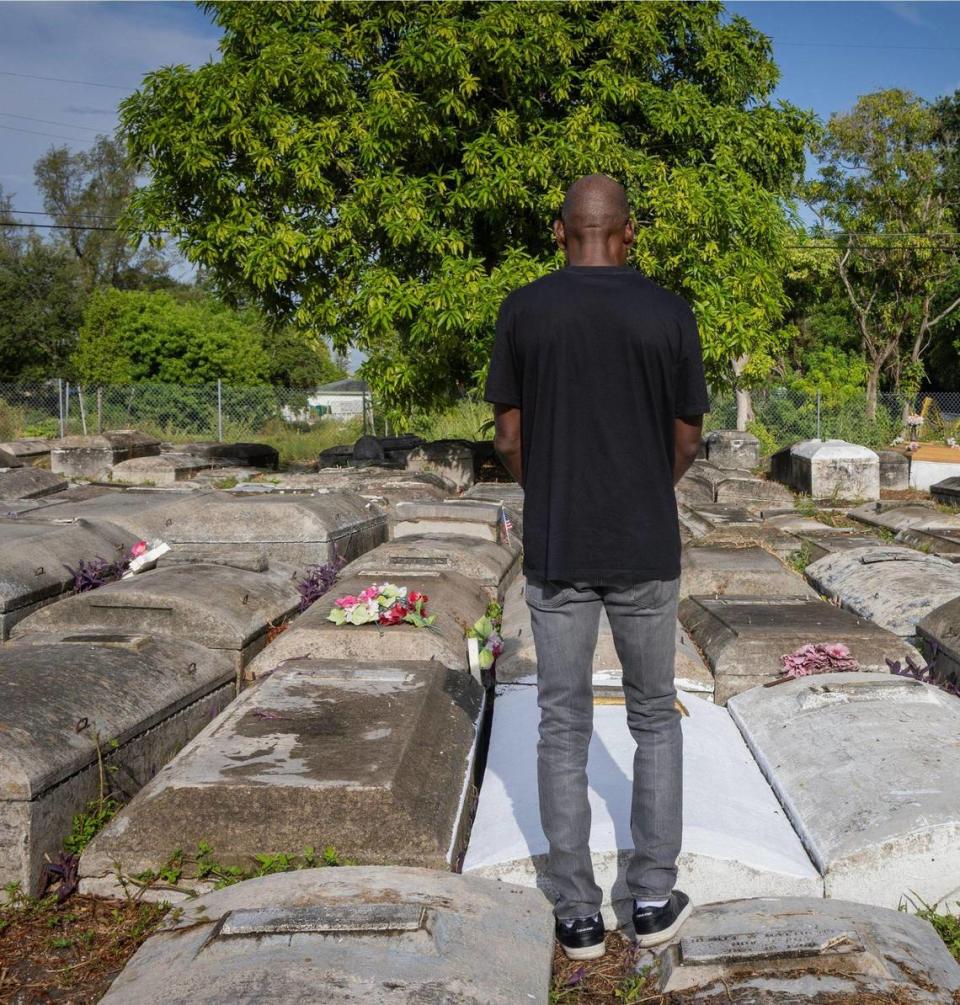
In 2019, Wooden found his mother in Lincoln Memorial Park in Miami, the neglected cemetery home to upwards of 30,000 Black Americans including lynching victims, veterans and even a few millionaires. The sprawling cemetery, filled with thousands of faded white above-ground sarcophagi and grayish headstones closely arranged in haphazard rows, sits on a plot of land on Northwest 46th Street in the historic neighborhood of Brownsville. He had originally intended to move her – Lincoln Memorial’s condition was nothing less than decrepit and he lived in South Carolina – yet his Miami family convinced him otherwise. So instead Wooden did something surprising: he bought the cemetery. Now nearly four years later, he wants to transform Lincoln Memorial into a museum of sorts, complete with historical tours that offer the truth about the segregated cemetery itself but also its inhabitants.
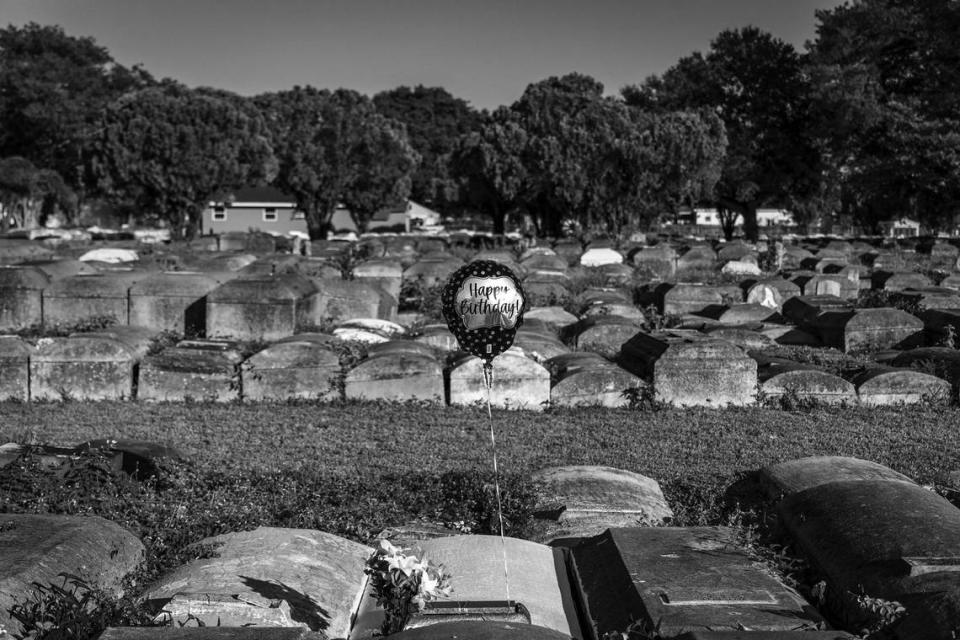
“We not only need this as a cemetery,” Wooden said, “we need it as a place to come and recognize this is where our community and the ones who built that community is at. We need to honor them and we need to piggyback and build off of that. Because, you know, our history is getting erased. And this is our history out here.”
After his morning discussion with his mother, Wooden often continues to beautify the landscape. Cutting the grass. Cleaning headstones. Picking up trash. He only pauses when a visitor comes by in search of a loved one. Thanks to a detailed record, Wooden can “nine times out of 10” help them find their relative — even if they are buried underneath someone else.
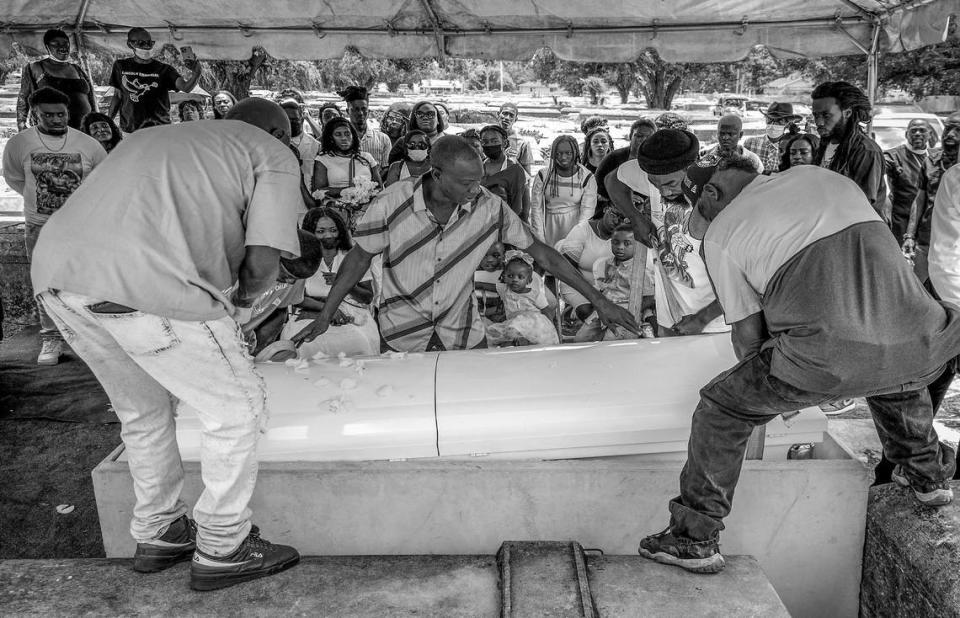
Wooden estimates he has invested “hundreds of thousands of dollars” into Lincoln Memorial since becoming owner. And the signs of resurrection have begun to show. The sidewalk out front just got repaved. Lights and an eight-foot black fence are supposed to be up by the end of February. And, arguably most important, burials are actually happening again.
“In about another month this will be a whole different place,” said Jessie’s brother Frank Wooden, who helps maintain Lincoln Memorial. “We want the kids to come out, like schools, so they can learn about our history.”
‘Lincoln was born out of segregation’
Founded by Kelsey Pharr, South Florida’s first Black mortician, in the early 1920s, Lincoln Memorial Cemetery was created so deceased Miamians of African descent could have a place to call their own. Black Miamians used to be buried at the back of the Miami City Cemetery, home to “Mother of Miami” Julia Tuttle among others, yet Pharr was asked to move the bodies after it began to fill.
“You didn’t bury Black and white people in the same place,” said Florida historian Marvin Dunn. “Lincoln was born out of segregation.”
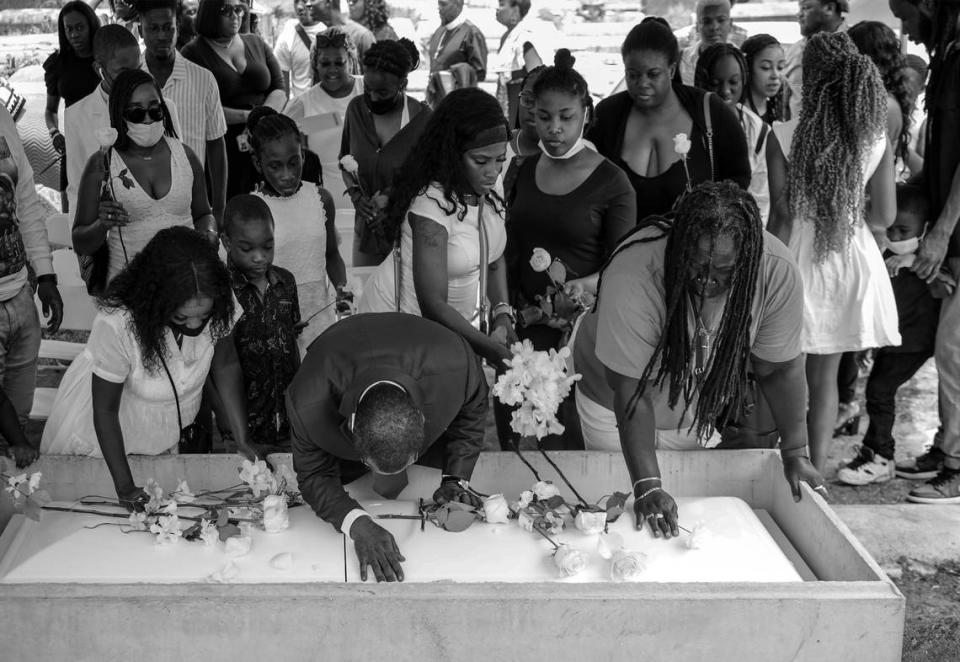
Over the years, Lincoln became a bastion of Black Miami history as the final resting place for D.A. Dorsey (Miami’s first Black millionaire), Fla. Rep. Gwen Cherry (the first Black woman to serve in the Florida legislature) and H.E.S. Reeves (founder of Miami’s first Black newspaper, The Miami Times). Once deemed the “finest colored cemetery in the south,” Lincoln still has remnants of its former glory: the arched stone gateway, Dorsey’s mausoleum with two large doors and the graves of veterans, which Wooden distinguishes with tiny American flags.
“Lincoln got to be the prominent cemetery,” said Enid Pinkney, a Black Miami historian, particularly on the neighborhood of Brownsville.
By the 1990s, however, Lincoln Memorial had fallen into disrepair. Thick, overgrown weeds began to swallow weathered headstones. Discarded beer bottles began to replace the flowers that tend to line graves. A passing truck damaged the arched stone gateway. Grave robbers would soon make Lincoln Memorial their playground.
“At first people would come and paint their loved ones’ graves and clean up the area,” Lincoln Memorial’s former manager Ellen Johnson told the Miami Herald in 1995. The goddaughter of Pharr, Johnson received the cemetery after his passing in 1964. She later passed it on to her niece, Jessica Williams. “Now the attitude is, ‘You’re dead, you’re gone.’“
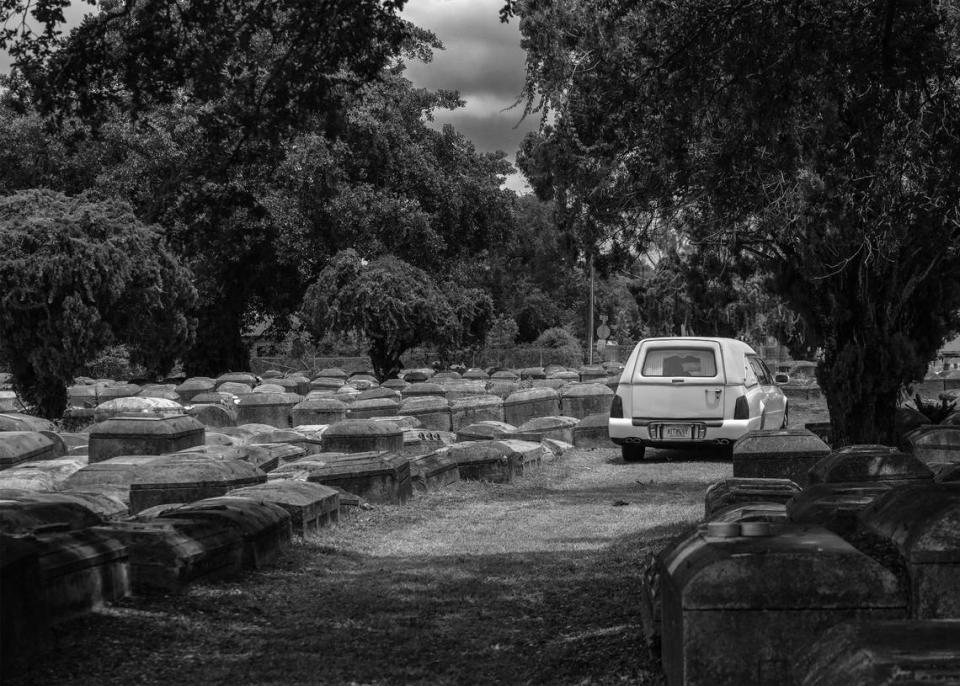
The trend continued into the 2010s when Lincoln Memorial became the subject of the Miami Herald’s “Caretakers” series and an exhibit at the Coral Gables Museum. A three-part dive into the Lincoln Memorial of past and present, the series detailed the struggles of Williams and Arthur Kennedy, the groundskeeper, as they tried to restore the cemetery to its former glory. As previously reported, the scarce burials meant that the cemetery generated minimal income.
“It was physically hard” to maintain, said Kennedy, who used to work 60-hour weeks under Williams. Kennedy started because he too wanted to find the missing grave belonging to a loved one, his grandfather. “I even got shot out there one night in 2019. They wanted to take the bodies out. Out of eight months, 240 days, I had at least 160 fights. People were having sex in the graveyard. People doing drugs, getting high in the graveyard.”
Added Dunn: “My heart broke every time I drove by it. And not just because of the luminaries buried in there but it’s the so-called ‘common folks.’ The custodians, the teachers, the workers, the maids, the bus drivers and not to mention the Black veterans. The condition of their graves was so embarrassing.”
Lincoln Memorial’s previous condition unfortunately mirrors that of many Black cemeteries across the country. In Tampa, a public housing complex and warehouse now occupy the land where Zion Cemetery used to reside. In Hillsdale, Mo., Greenwood Cemetery had transformed into an overgrown dumping ground. And in Houston, flooding has washed away many of Olivewood Cemetery’s gravesites.
And while public funding helps keep many primarily White burial grounds like the Miami City Cemetery well-manicured, Black cemeteries are often left to fight on their own, though it was institutional segregation that necessitated places like Lincoln Memorial in the first place.
“Jessie has done a lot but it’s a heavy lift for a single owner of a cemetery,” Dunn said. “Miami-Dade County has a responsibility for these dead citizens to protect their place of burial.”
“This is not charity,” Dunn added. “This is a debt to the dead. These people built Miami.”
‘For the first time in my life, I knew where she was at’
Born in Miami, Wooden stayed with various family members following the passing of his mother shortly after his birth. He graduated from Miami High before eventually moving to South Carolina where he found a career in real estate. Still, Wooden felt something was missing.
“It was tough to the point I blocked it out,” Wooden said. “Relationships were tough not having a mother figure. Sometimes you feel like you’re not loved, nobody cares.”
Wooden discovered his mother’s 98-year-old sister in 2019 and began to pick her brain. His newfound aunt filled in all the blanks – she told him when his mother met his dad, where she was buried, how beautiful she was – and even showed him pictures for the first time. Shortly before her 99th birthday, Wooden’s aunt passed and he made the decision to come to Miami to move his mother to a family plot in South Carolina due to the poor conditions at Lincoln Memorial. His siblings objected so he decided to purchase the cemetery “not knowing anything about the cemetery business or anything about Lincoln Memorial,” Wooden said.
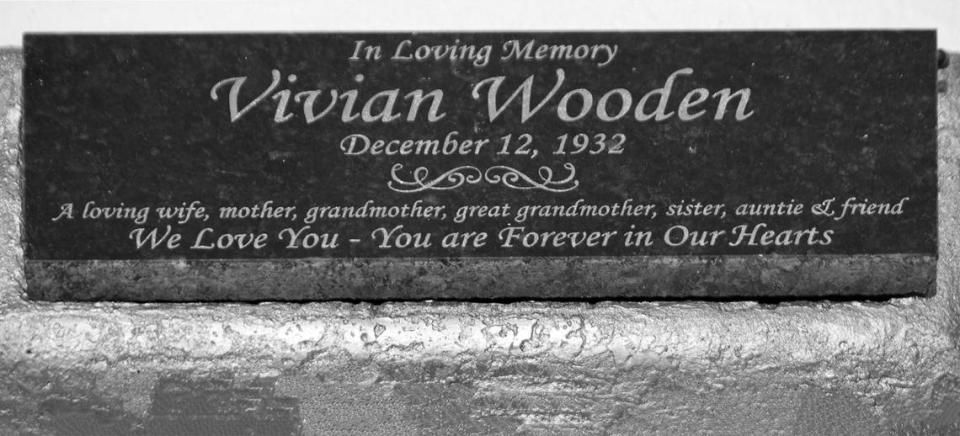
“All I knew was that my mother was here and for the first time in my life, I knew where she was at,” Wooden continued.
As Wooden began to learn the history of Lincoln Memorial, he became enamored. And a rumor he heard that the land would have been cleared for high rises confirmed in his mind that he was doing the right thing. The beautification process, however, wasn’t easy. He had to hire contractors to remove the trees, bees and snakes.
“I had like 40 to 50 people out here one time,” Wooden said.
The investment even took a toll on his marriage.
‘I’m not gonna say it caused a divorce but all that is worth it for me to find my mom and be able to have a relationship with her, to be her gatekeeper,” Wooden said. Despite the challenges, it’s his mother who keeps him going. “In my heart, I know I’m making her proud.”
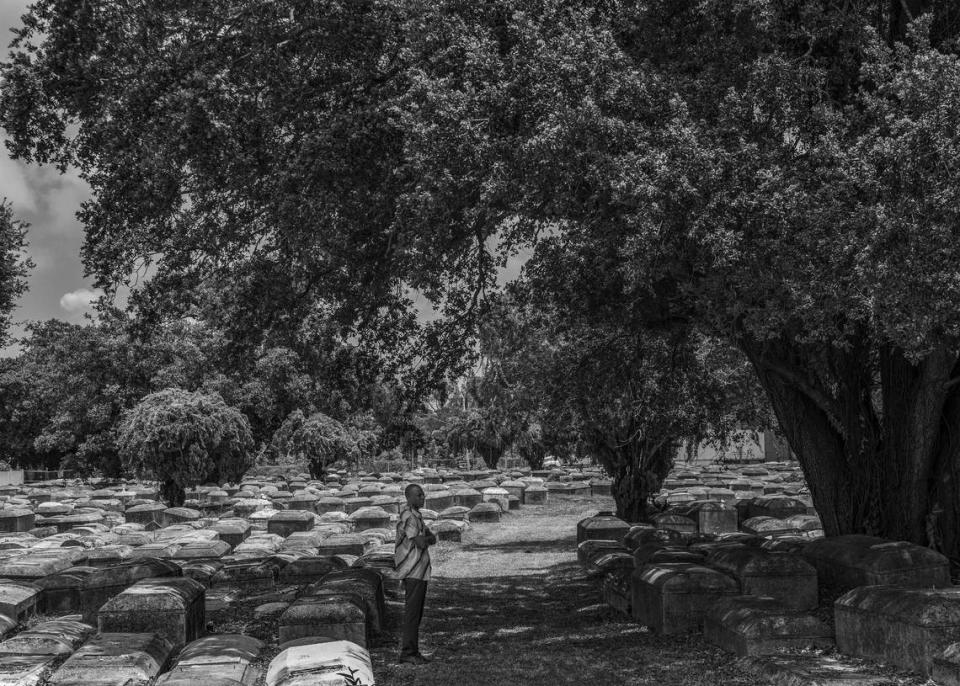
Only recently has Miami-Dade County begun to help. In late 2023, Wooden received $500,000 from the County courtesy of Miami-Dade Commissioner Keon Hardemon to help build the fence and install the lights. For that, he’s thankful, especially given the current state of his finances.
“I can’t go on another five years or I’ll be completely broke,” Wooden said.
In a statement, Hardemon applauded Wooden’s vision for “positioning the cemetery as a beacon of light and historical significance to Miami-Dade” and vowed to continue to support Lincoln’s journey to becoming “a cultural destination for the Brownsville community.”
“It is vitally important that the cemetery is not an eyesore,” Hardemon wrote. “Besides being a final resting place for many of the Black community’s pioneers, it is positioned near the gateway of the Brownsville neighborhood. Therefore, its historically poor condition has harmed the property values and reputation of the community.”
But the future is still uncertain for Lincoln Memorial Park, said Dunn. One of his worst fears is that “it will be in ruins just as soon as Jessie is no longer present or able to take of it.” The onus, Dunn continued, now lies on the County.
“These are citizens of Dade County who are buried out there, who paid taxes to Dade County,” Dunn explained. “Dade County owes them.”

